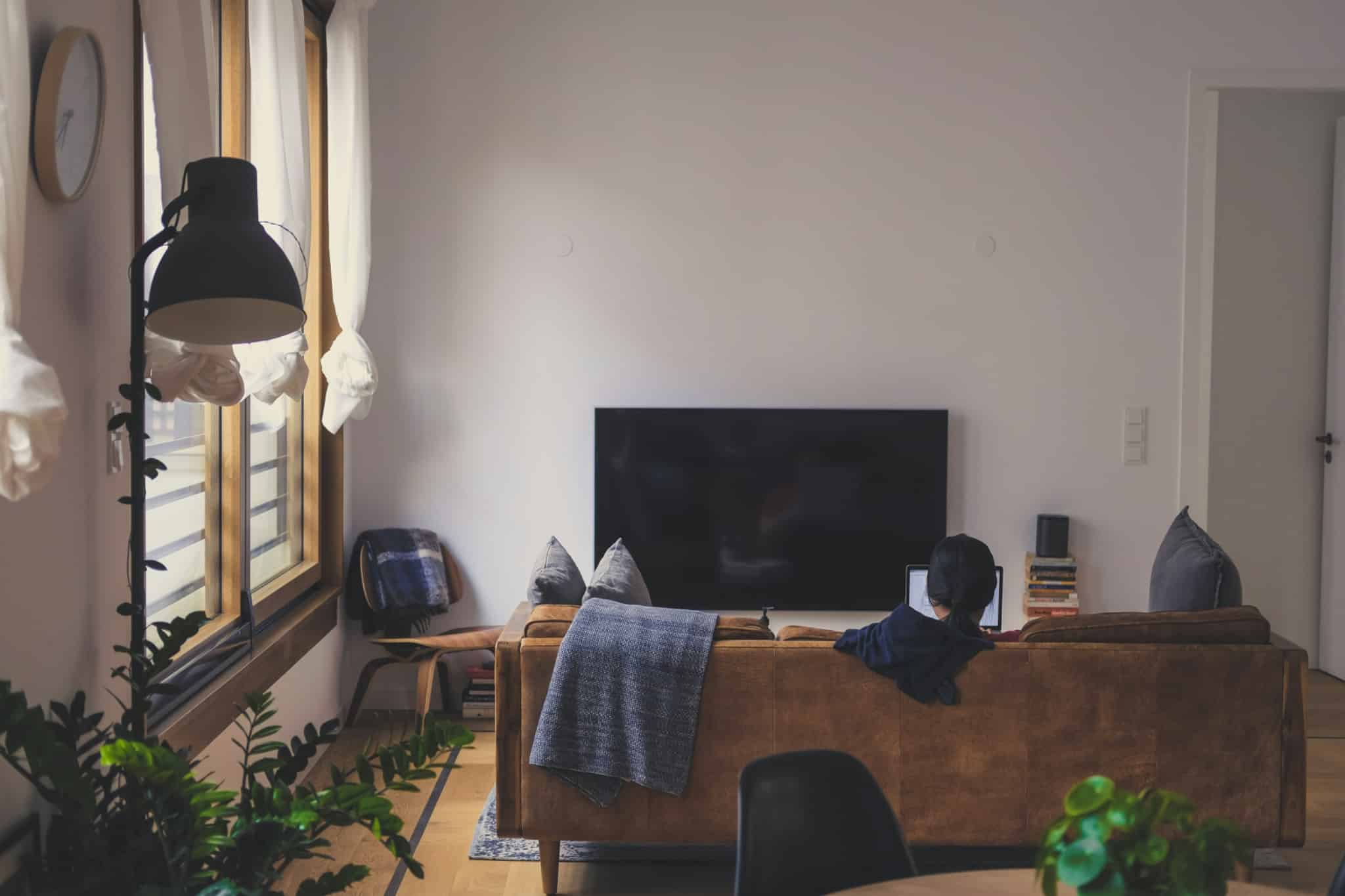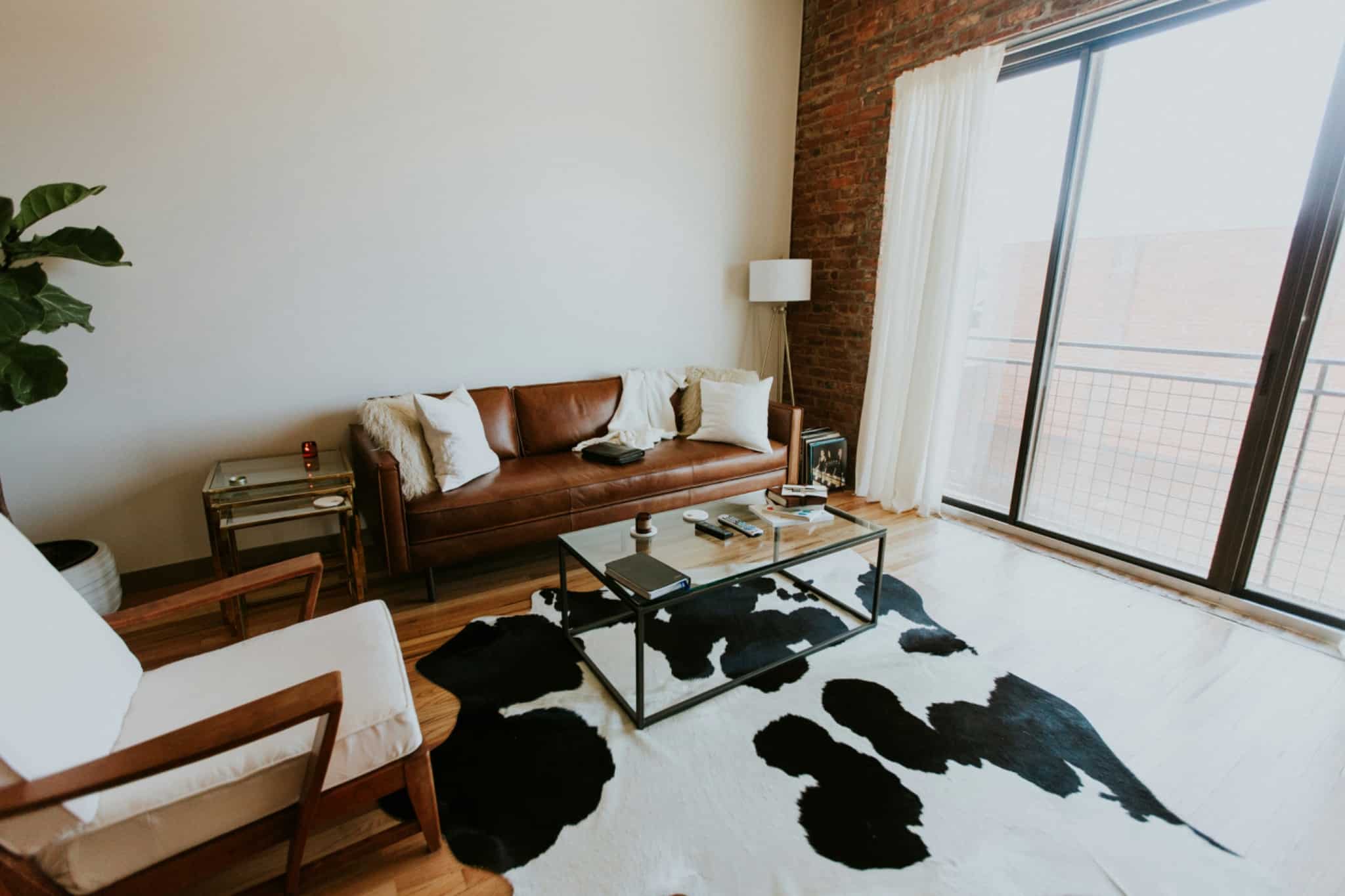Furniture placement is a powerful tool that can dramatically transform how a space is perceived, especially in small homes.
How you arrange your furniture can distinguish between a cramped, cluttered space and an open, airy sanctuary.
There are, though, some specific strategies for different types of small living spaces, which offer practical advice to help you maximize every square inch of your home.
You can never get to the end of it; creativity can go a long way.
The garage can become a studio, you can live in a barndominium, there are endless ides if you know how to maximize comfort and space.
Tiny Houses
Tiny houses, often defined as homes under 400 square feet, require a minimalist approach to furniture placement.
In such compact spaces, every piece of furniture needs to serve multiple functions, and the arrangement must be thoughtfully planned to ensure that the space remains livable.
One key strategy is to embrace verticality. You can keep the floor space clear and create a sense of openness by utilizing vertical storage solutions like tall bookcases, wall-mounted shelves, and hanging racks.
Another effective tactic is to use foldable or retractable furniture.
A dining table that folds against the wall when not in use, or a bed that converts into a sofa during the day, can free up valuable space for other activities.
Mirrors are also your friend in a tiny house; placing them strategically can reflect light and give the illusion of a larger space.

Studio Apartments
Studio apartments, which typically consist of a single room that serves as the living, sleeping, and dining area, present unique challenges.
The key to making a studio apartment feel larger lies in creating distinct zones within the open space.
One way to achieve this is by using lightweight room dividers or strategically placed furniture to separate different areas.
For example, a bookshelf can serve as a divider between the sleeping area and the living area, providing both storage and a visual barrier.
Choosing furniture that is proportional to the space is also crucial.
Opt for slim, low-profile pieces that don’t overwhelm the room, and consider furniture that can be tucked away when not in use, like a Murphy bed or a nesting table set.
Compact Condos
Condos often combine several living functions into one open area, which can make furniture placement challenging.
There are specific interior design tricks to keep the space feeling open and airy, but first, it’s important to define areas without overcrowding the room.

Using area rugs to delineate different zones, such as the living area, dining space, or workspace, can create visual separation without needing walls.
Vertical storage is another essential element in condos, where floor space is often at a premium.
Tall bookcases, wall-mounted shelves, and storage units that reach up to the ceiling can help you make the most of the available space while keeping the floor clear.
A small sectional sofa placed against a wall can provide ample seating without taking up too much room, leaving the center of the space open.
Mirrors can also play a significant role in condos, especially when placed on sliding doors or in narrow hallways, as they can reflect light and make the space feel more expansive.
Narrow Townhouses
Narrow townhouses often feature long, narrow rooms that can feel cramped if improperly arranged.
The key to maximizing space in these homes is to create a sense of flow and continuity.
Start by choosing furniture that suits the room’s proportions—long, low-profile pieces can help elongate the space.
Arrange furniture in a way that encourages movement from one area to another, avoiding blockages that could disrupt the flow.
Placing a large mirror at the end of a narrow room can create the illusion of depth, making the space appear longer than it is.
Another trick is to use light colors on walls and furniture, which can open up the space and make it feel larger.
In addition, consider using built-in furniture or custom pieces that perfectly fit your home’s dimensions, eliminating wasted space and creating a more streamlined look.
Micro-Apartments
Micro-apartments, typically under 300 square feet, demand the most creative furniture solutions. In such a small space, every piece of furniture should serve multiple purposes.
A sofa that doubles as a bed, a coffee table with storage, or a wall-mounted desk that can be folded away are all excellent choices.
The layout should be carefully planned to avoid overcrowding—consider using sliding doors or curtains to separate different areas instead of traditional doors, which can take up valuable space.
Vertical storage is crucial in micro-apartments, where floor space is at a premium.
Floating shelves, wall-mounted cabinets, and overhead storage can keep the floor clear and make the space feel larger.
Mirrors are also an essential tool in micro-apartments; placing them opposite windows can help reflect light and make the space feel brighter and more open.
The Impact of Colors and Wall Paint
In addition to thoughtful furniture placement, the colors you choose for your walls and furniture play a significant role in how spacious your home feels.

Light, neutral colors such as whites, soft grays, and pale beiges are excellent choices for small spaces because they reflect more light, making the room feel brighter and larger.
These colors create an airy atmosphere that can open up even the most compact spaces.
On the other hand, darker colors can make a room feel more intimate but may also make it seem smaller.
However, when used strategically, such as on an accent wall, dark colors can add depth and create a focal point that enhances the room’s overall design without overwhelming it.
Another effective trick is to use the same color for your walls and ceiling.
This creates a seamless transition that can make the ceiling feel higher and the room more expansive.
If you prefer more vibrant colors, consider using them in smaller doses, such as through accessories or a single accent wall, while keeping the rest of the space light and neutral.
Also, painting trim and doors a lighter color than the walls can give the illusion of the walls receding, further enhancing the sense of space.
Combining the right colors with strategic furniture placement allows you to create a small home that feels cozy and expansive.
Almost every smaller home can feel larger, more functional, and more comfortable.
Prioritize functionality, maintain a sense of flow, and use every inch of space wisely.
Don’t forget the mirrors—they do wonders for the space around us!
